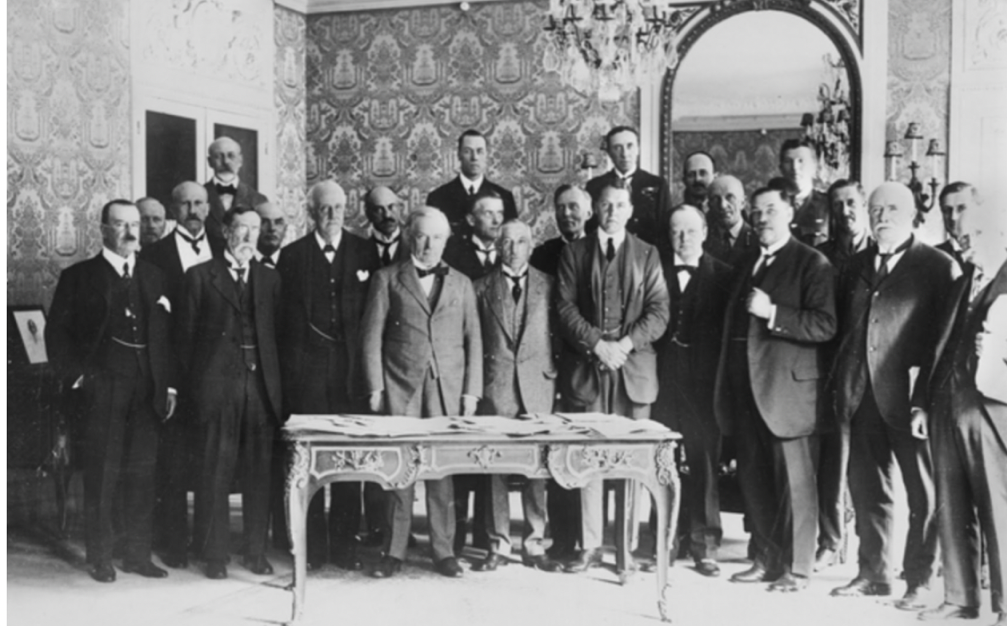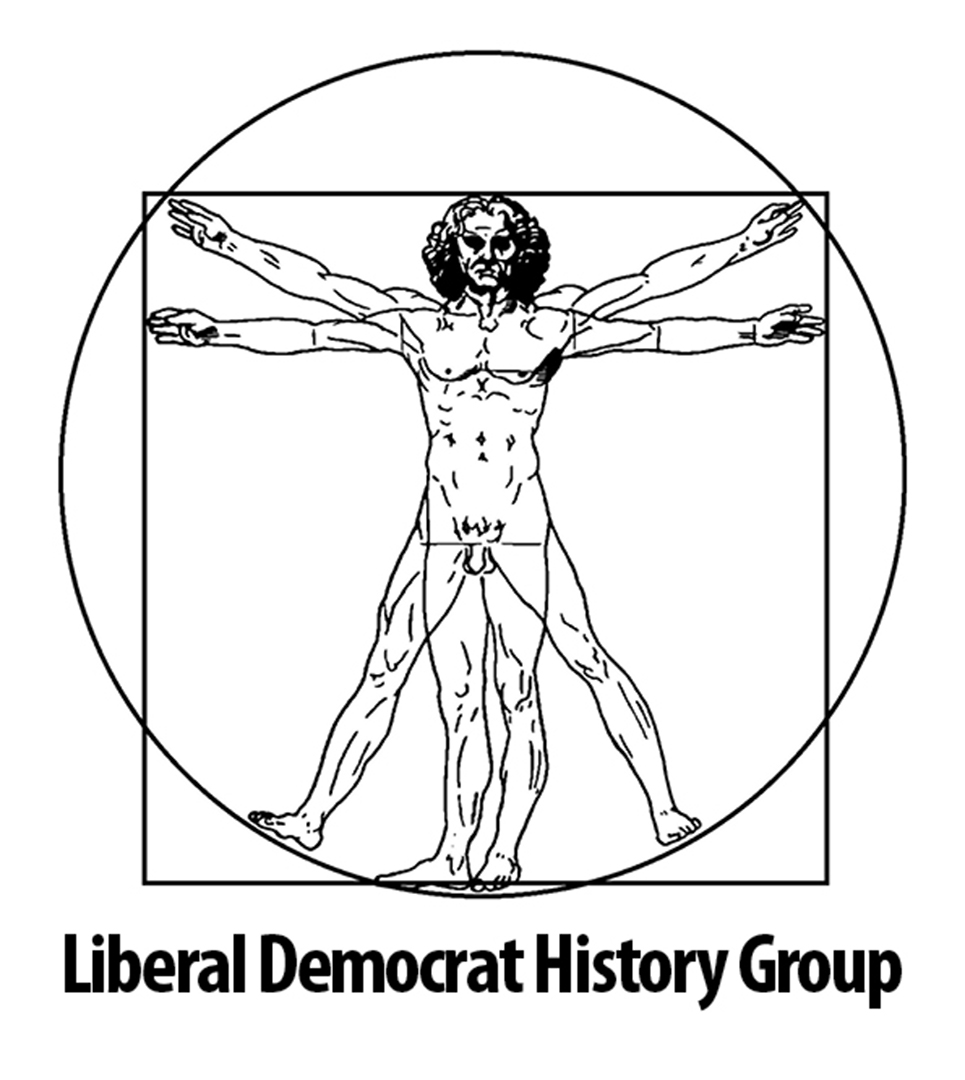The 1918 election subsequently became known as the ‘coupon’ election, in reference to the signed letter of endorsement that selected Coalition candidates received from Lloyd George and the Conservative leader, Bonar Law. Historians have since argued that the coupon essentially sealed the fate of those Liberals who were not fortunate enough to be amongst the 159 Liberals who did receive the Coalition’s backing. Those Liberals that Lloyd George chose to abandon were left defenceless against Coalition candidates, who had a full claim on the spirit of national unity and patriotism that characterised Britain’s war-weary mood following the end of hostilities.
The election result was catastrophic for these independent Liberals, who remained under Asquith’s leadership and virtually all the Party’s representatives from the pre-war era were defeated, including Asquith himself who lost his seat at East Fife. Other casualties included Walter Runciman, Sir John Simon, Reginald Mckenna and Herbert Samuel. Sir Charles Hobhouse and T Mckinnon Wood were even unfortunate enough to lose their deposits, at Brent East and Glasgow, respectively. Just 28 Asquithians survived the slaughter, as opposed to the 133 Lloyd George supporters who emerged triumphant from the contest.
Initially, Lloyd George had assured his former Liberal colleagues that the contest would in no way impair the unity of the Liberal Party. At a Downing Street meeting, following the announcement of the election, Lloyd George told sympathetic Liberals that the joint Coalition manifesto represented a perfectly clear and satisfactory exposition of Liberal policy.
Journalists gathered at the 12 November meeting unanimously agreed that Lloyd George’s explanation of post-war policy amounted to an authentic representation of Liberal principles. The Daily Chronicle hack, Harry Jones exclaimed that ‘the walls of Downing Street had never heard more democratic sentiments or a speech more instinct with the spirit of true Liberalism, from the lips of any statesman’. The premier declared that he remained true to the Liberal faith in free trade and peace and indicated that a desire for revenge should not be permitted to dominate the peace settlement with Germany, which should be driven by the notion of justice. Evoking the spirit of the pre-war Liberal social reforms, Lloyd George alluded to plans for domestic reform, which included reference to the establishment of minimum wages and plans to raise standards of health and housing. Yet, within days he was openly attacking his former colleagues and questioning their claim to support the Coalition. His moderate Liberal tones and talk of a righteous peace were replaced by a call to ‘Make Germany Pay’ and the government began issuing lists of coupon candidates to help the electors determine where their loyalties should lie.
Historians have debated the motive behind this volte-face, but most agree that it reflected Lloyd George’s belief that Liberalism was ultimately doomed; a belief apparent in the conversation he had with Ridell in January 1918, when he told the press magnate that ‘the Liberal Party was a thing of the past that could not be resuscitated’. Trevor Wilson claims that Lloyd George was therefore keen to use the election as a means to salvage his own political future and consolidate his personal support. Thus, rather than the coupon being responsible for destroying the Liberal Party, which was already defunct, it was actually a method of saving a few selected Liberals in order to boost Lloyd George’s position within the Coalition.
The idea that Lloyd George was ultimately tricked by the Conservative Chief Whip, Sir George Younger, over the final list of Coalition candidates, has also been dismissed. In all, 364 Conservatives received the support of the coupon, in comparison to just 159 Liberals. However, as Roy Douglas points out, Lloyd George had been aware of the arrangements for some time. His own Chief Whip, Freddie Guest had been involved in relevant negotiations since mid-1918 and an initial list of Coalition candidates had first been drawn up in July, with a wartime election in mind. This original list was subsequently adapted for a peacetime election following the sudden defeat of Germany. Douglas claims that if Lloyd George had really been interested in saving his Liberal colleagues, he would have sabotaged the arrangement by adopting an election manifesto that would have proved unacceptable to the Conservatives. Lloyd George himself even indicated that he was seeking revenge on those Liberals who had betrayed him during the War. In a speech at Newcastle, he cited the vote on the Maurice debate as the principle reason for his decision, although this explanation has since been questioned, given that a handful of Liberals who voted against him on this occasion did receive the coupon. Likewise, a number of those who did follow him into the division lobby did not obtain his endorsement.
Regardless of the reasoning behind the allocation of the coupon, the election result was devastating for those Liberals who were not in possession of it. 333 of the 364 Tories who received the coupon were elected, as were 136 of the 159 Liberals who had the Coalition’s support and faced no opposition from Tory candidates. Nevertheless, it should be remembered that this was essentially a jingoistic election campaign that the Tories were more naturally placed to benefit from anyway, even without the coupon. For example, the Tories secured all eight seats in Manchester, despite the fact that only three of their candidates had the coupon.
The election also highlighted the growth of Labour. The campaign was the first fought on the grounds of universal male suffrage and illustrated that Labour were much more in tune with the needs of the modern electorate than their ageing counterpart. Labour may only have won 36 seats, but they had polled 2,385,472 votes and now outnumbered the independent Liberal Party within Parliament. It was clear that Labour were now a force to be reckoned with, having fielded 388 candidates in comparison to just 56 in 1910.
The contest also shattered any hope that the Liberals would be re-united and exacerbated divisions within the Party, Coalition Liberals facing opposition from local Liberal Association candidates in four different constituencies. The independent Liberals were reduced to a tiny minority in the new House of Commons, whilst the Coalition Liberals, who lacked any ideological foundations, increasingly became the prisoner of their Conservative Coalition partners. The Liberal Party, who had entered the war as the governing power now found themselves in a Parliament with few of their former colleagues remaining and against a Coalition Government that dominated the Commons with 470 seats.

Journal of Liberal History
For the discussion and research of Liberal, Liberal Democrat and SDP history
Developed and hosted by Prater Raines
